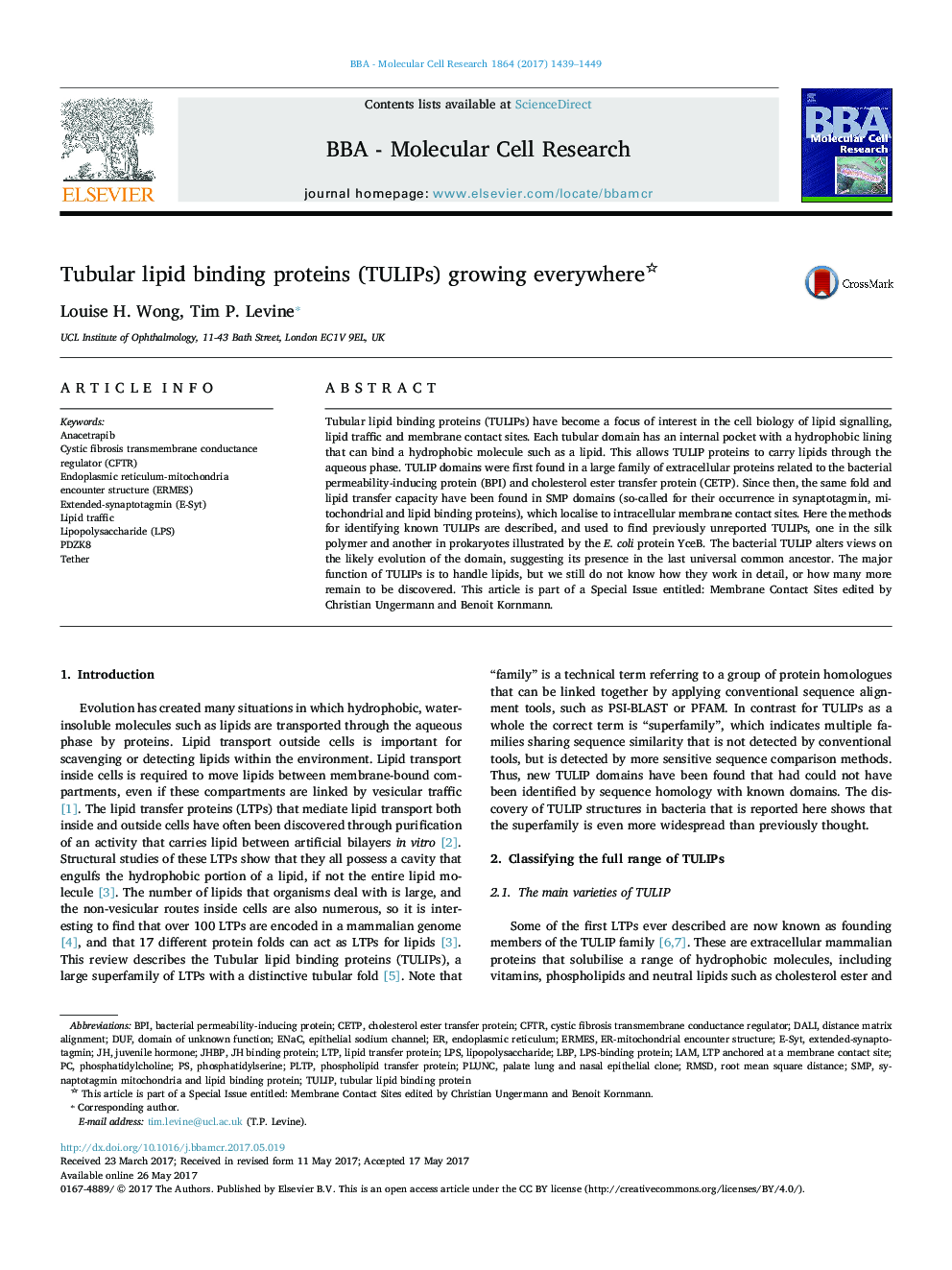| کد مقاله | کد نشریه | سال انتشار | مقاله انگلیسی | نسخه تمام متن |
|---|---|---|---|---|
| 5508590 | 1400391 | 2017 | 11 صفحه PDF | دانلود رایگان |

- Proteins with the tubular lipid binding fold exist in a wider variety than is usually appreciated.
- TULIPs are found in prokaryotes, altering views on their evolution.
- It is not yet known whether TULIPs transfer lipids as tunnels or as shuttles.
- Tests have not yet been done to say if TULIPs with SMP domains (for example E-syts and ERMES components) tether contact sites.
- It is likely that more TULIPs remain to be discovered.
Tubular lipid binding proteins (TULIPs) have become a focus of interest in the cell biology of lipid signalling, lipid traffic and membrane contact sites. Each tubular domain has an internal pocket with a hydrophobic lining that can bind a hydrophobic molecule such as a lipid. This allows TULIP proteins to carry lipids through the aqueous phase. TULIP domains were first found in a large family of extracellular proteins related to the bacterial permeability-inducing protein (BPI) and cholesterol ester transfer protein (CETP). Since then, the same fold and lipid transfer capacity have been found in SMP domains (so-called for their occurrence in synaptotagmin, mitochondrial and lipid binding proteins), which localise to intracellular membrane contact sites. Here the methods for identifying known TULIPs are described, and used to find previously unreported TULIPs, one in the silk polymer and another in prokaryotes illustrated by the E. coli protein YceB. The bacterial TULIP alters views on the likely evolution of the domain, suggesting its presence in the last universal common ancestor. The major function of TULIPs is to handle lipids, but we still do not know how they work in detail, or how many more remain to be discovered. This article is part of a Special Issue entitled: Membrane Contact Sites edited by Christian Ungermann and Benoit Kornmann.
Journal: Biochimica et Biophysica Acta (BBA) - Molecular Cell Research - Volume 1864, Issue 9, September 2017, Pages 1439-1449